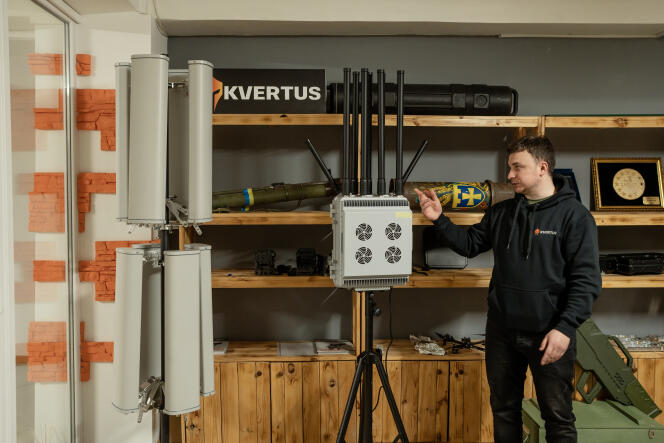


Protective force fields, invisible shields that sound like the stuff of science fiction, are a reality on Ukraine’s battlefields. Depending on their strength, frequency and distance from the target, they are capable of paralyzing a kamikaze drone as it hurtles towards its target. Known as domes or REB (the acronym given to radio electronic combat in Ukrainian and Russian), there's nothing esoteric about these magnetic fields. They are frequency jammers and part of the electromagnetic spectrum's (EMS) arsenal.
The Ukrainian army desperately needs more domes to protect its troops and front-line equipment. And a handful of specialized Ukrainian manufacturers are seeking technological, industrial and financial solutions to meet this demand.
Domes became crucial in the summer of 2023, when first person view (FPV) drones (quadcopter kamikazes) began being used on a massive scale on both sides of the battle. Loitering munitions are inexpensive, costing between €300 and €1,000 each, and are capable of striking any target with pinpoint accuracy – whether that's a soldier in a trench, an advancing tank or an ambulance racing to the rear. Drone units on both sides often post videos on social media of their successful attacks, showing a soldier being ripped to shreds or an armored vehicle exploding into a fireball.
As a result, it has become extremely dangerous to move around within the 10-kilometer strip of land along the line of contact. FPV drones work in conjunction with a constellation of observation drones, which (except in bad weather) are constantly flying over the enemy rear. Due to the constant presence of sensors (including infrared in the dark), the battlefield has become almost transparent. Personnel rotation, logistics and evacuations are now much riskier operations than they were a year ago, when operations were headed by the artillery. Several Ukrainian commanders interviewed by Le Monde confirmed that Russian FPV drones are the main cause of casualties in their ranks.
"The front is overrun with small drones such as DJI Mavics [a leading manufacturer of quadcoptors in China]," said 29-year-old Oleksiy Tcherniouk, the vice-president of Kvertus. one of Ukraine's three main signal jammers. A man with a cheerful face and lively eyes, Tcherniouk spoke from his office in Kyiv and stressed that the results of FPV UAVs are as spectacular as electronic warfare (EW) weapons are invisible.
There are no videos of drones crashing as a result of jamming. The EMS transmits frequencies that form a spectral haze around the target until they cut off the radio signal from the pilot to the drone, as well as the video signal from the drone to the pilot. Unable to steer autonomously, the FPV drone either drops like a stone or follows a random trajectory.
You have 57.69% of this article left to read. The rest is for subscribers only.
